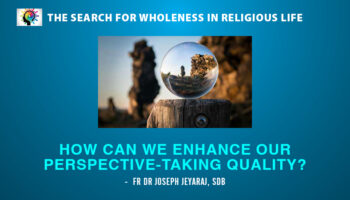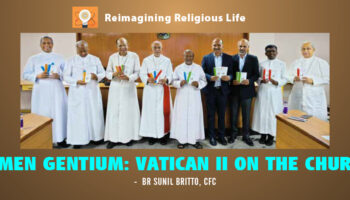Here is a true case.
Sr Scholastica is suffering from a severe skin disease. With her provincial’s permission, she stays at home while receiving treatment. Realizing that she would have to be away from the community for over a year, her superior asks her to request for exclaustration. But, with the advice of a canonist, Sr Scholastica applies for a leave of absence. What is the difference?
Leave of absence is permission granted to a religious by the major superior with the consent of the council to stay outside the religious house. It means a prolonged absence from community life or a temporary suspension of the obligation to observe community life granted to a religious. There should be a just cause to grant such a permission. Major superiors can grant this permission only for one year—unless it is for the purpose of: (i) getting medical treatment, (ii) pursuit of studies or (iii) apostolate exercised in the name of the institute (CIC c. 665, CCEO cc. 478, 495, 550).
Those members who are on leave of absence are part of the institute and the local community to which they are assigned. They are obliged to wear the religious habit. They continue to be full members of the institute, enjoying all the rights and privileges, including active (the right to vote) and passive voice (the right to be voted) in elections. Even if they are not members of the chapters, they can be elected or nominated to any office subject to their acceptance.
Exclaustration is permission granted to a perpetually professed religious to stay outside the enclosure or to stay away from the religious house. There should be a grave reason to grant exclaustration, for instance, to contemplate on and discern one’s vocation or to care for an ailing parent. There are two types of exclaustration: voluntary and imposed (CIC cc. 686, 687; CCEO cc. 489- 491, 548).
Voluntary exclaustration is granted at the formal request of a religious. If the religious is a cleric, he requires the prior consent of the bishop, where he intends to reside. While CIC gives the right to grant the permission to the superior general with the consent of the council, CCEO states that only the Holy See or diocesan bishop, to which the institute is subject, can grant exclaustration. The maximum period: three years. A religious seeking it for more than three years need to appeal to the Holy See, if it is a pontifical right institute and to diocesan bishop in a diocesan right institute. However, only the Holy See can grant the permission in respect of cloistered nuns. Even if it is granted for three years, the religious in voluntary exclaustration may return to the religious house, with the permission of the superior, if the reason or reasons for exclaustration have already ceased.
In imposed exclaustration, the superior general takes the initiative. After obtaining the consent of the council, the superior general is to make a formal request to the Holy See (for a pontifical right institute) and to diocesan bishop (for a diocesan right institute). It is exercised in order to protect the rights of the institute against the aberrant behaviour of a member, who, despite the advice of the superior general, is not willing to apply for a voluntary exclaustration on their own. While imposing exclaustration on account of a grave cause, superiors must observe equity and charity.
Effects of exclaustration: During the period of exclaustration, although the religious remains a member of the institute, there are certain limitations in their relationship with the institute: The person is: (a) dispensed from those obligations that are incompatible with the new condition of life, e.g., obligation to common life. The vows of obedience and poverty are relaxed to a certain extent; (b) dependent on and under the care of the superiors of the institute and the local ordinary; (c) allowed to wear the religious habit unless the indult specifies otherwise; (d) without active and passive voice. According to CCEO, the religious is obliged not to use the habit (CCEO c. 491) and is subject to the diocesan bishop rather than to the religious superior. Although regular communication is expected between the religious and the superior, it depends on their mutual agreement.
Sr. Licia MSI
To subscribe to the magazine Contact Us





